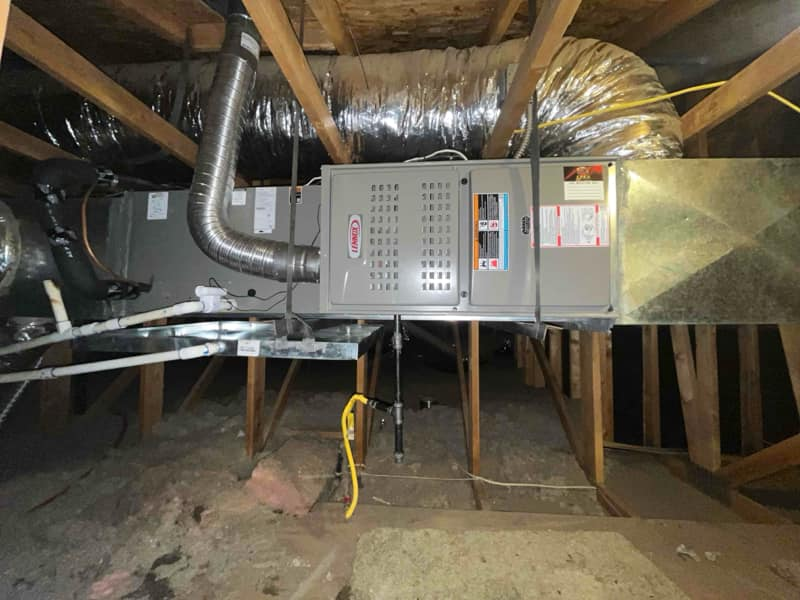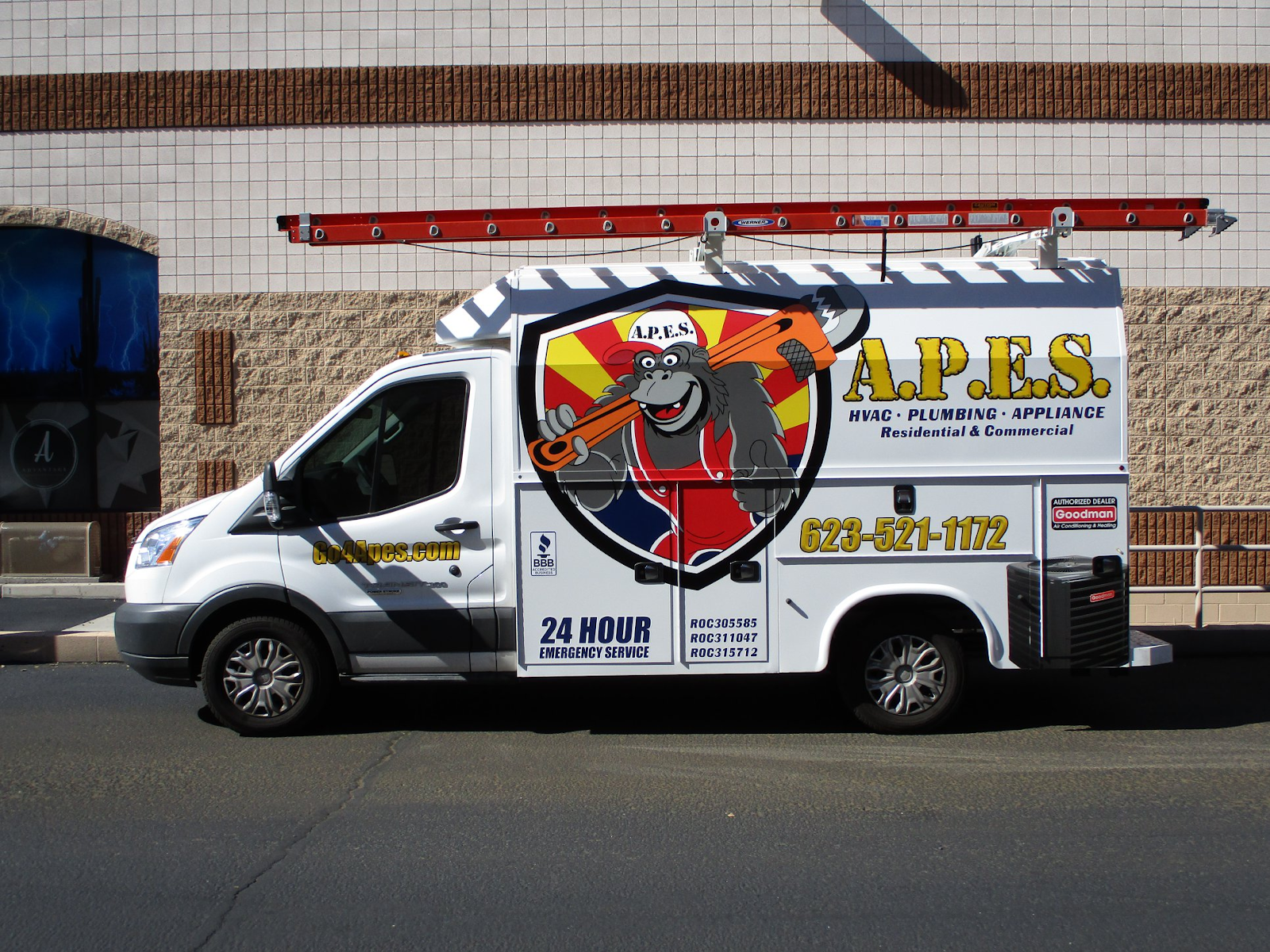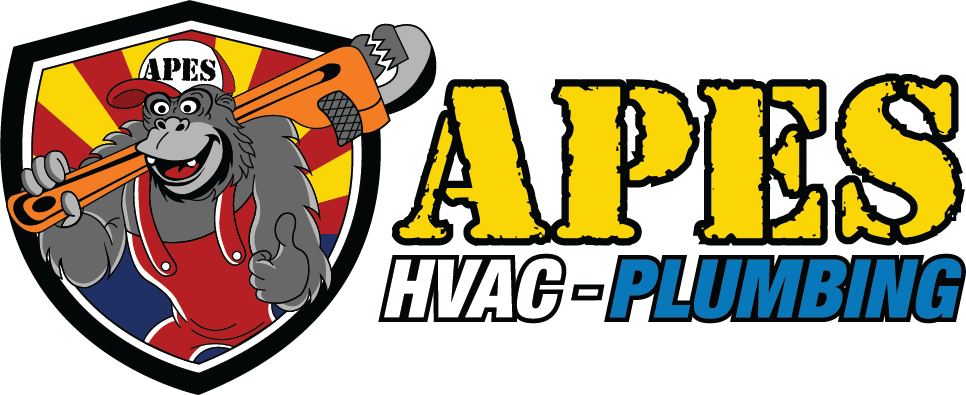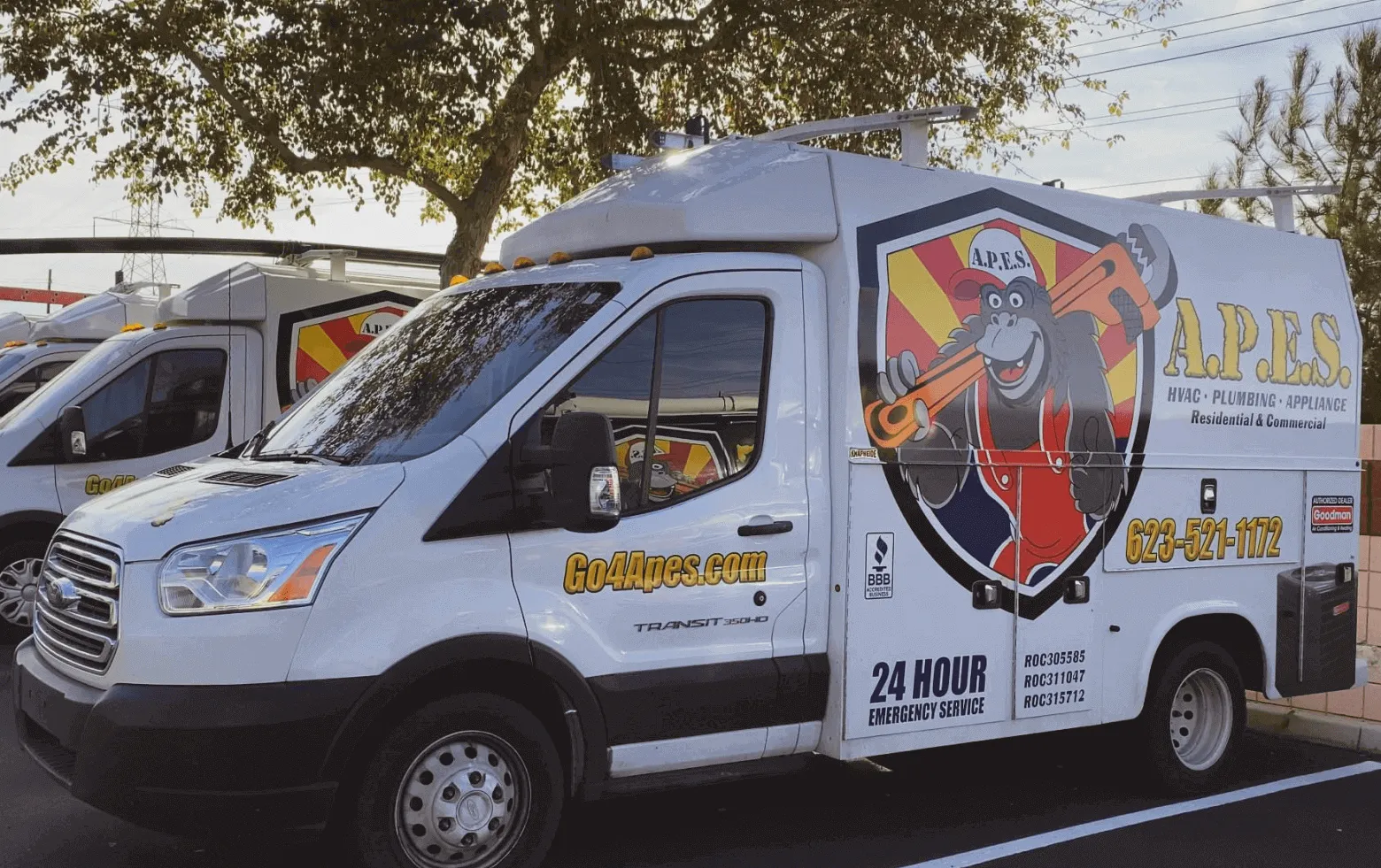When was the last time you thought about the state of your air ducts? It’s easy to overlook these hidden workhorses of your home, yet they play a critical role in maintaining a healthy and efficient living environment. Clean air ducts aren’t just about avoiding dust—they’re important for optimal air quality, lower energy bills, and even your family’s respiratory health. But here’s the problem: many homeowners, even seasoned ones, fail to recognize when their air ducts need cleaning until it’s too late.
The stakes couldn’t be higher. Dirty ducts can circulate allergens, mold spores, and other contaminants throughout your home, exacerbating allergies and asthma. They can also force your HVAC system to work harder, which ultimately leads to costly energy bills and potential system breakdowns. The consequences of neglecting air duct maintenance extend beyond inconvenience; they can compromise both your comfort and your wallet.
Having worked with numerous homeowners, our team at APES have seen firsthand how subtle signs often go unnoticed, turning small issues into expensive repairs. So we’ll walk you through the top 10 signs your air ducts need cleaning ASAP. Beyond just identifying these red flags, we’re here to help you take control of your home’s air quality and efficiency.
Do your air ducts need cleaning? Here are the 10 signs
1. Unexplained Increase in Energy Bills
What it means: If your energy bills are climbing without any change in your usage, dirty air ducts may be the culprit. Dust and debris can restrict airflow, forcing your HVAC system to work harder to maintain temperature.
Why it matters: Increased energy consumption not only raises your bills but also shortens the lifespan of your HVAC system. This inefficiency can lead to costly repairs or replacements down the road.
What to do next: Check for visible dust buildup around vents. If the issue persists, consider calling a professional to inspect and clean your ducts.
2. Persistent Dust Despite Regular Cleaning
What it means: If you find yourself dusting more often than usual, it could be a sign that your air ducts are blowing dust and debris into your living spaces.
Why it matters: This isn’t just a nuisance—it can negatively impact indoor air quality, especially for those with allergies or asthma. Dirty ducts allow pollutants to circulate throughout your home.
What to do next: Inspect the vents for visible debris. If dust clouds are visible when the HVAC system starts, it’s time to schedule a professional cleaning. Clean ducts ensure cleaner air and a healthier home.
3. Noticeable Mold Growth Around Vents
What it means: Mold around your air ducts or vents is a red flag. This indicates high moisture levels inside the ducts, creating a breeding ground for mold spores.
Why it matters: Mold spores can circulate through your home, posing severe health risks like respiratory issues and allergic reactions. It can also damage your HVAC system.
What to do next: If you spot mold, don’t attempt DIY cleaning. Mold remediation and a thorough duct inspection to identify and fix the source of moisture.

4. Weak or Uneven Airflow
What it means: If certain rooms in your home feel warmer or cooler than others, or if airflow from vents feels weaker than it should, dirty air ducts could be restricting airflow.
Why it matters: Uneven temperatures and reduced airflow strain your HVAC system, increasing energy consumption and reducing comfort. This could also signal blockages or leaks in your ductwork.
What to do next: Check vent openings for visible blockages. If the issue persists, a pro inspection can help locate and address blockages or leaks in the system.
5. Strange or Musty Odors
What it means: Persistent musty or unpleasant smells, especially when your HVAC system is running, may indicate mold, mildew, or trapped debris in your air ducts.
Why it matters: Bad odors could mean harmful contaminants are circulating throughout your home, affecting air quality and potentially leading to health issues.
What to do next: Sniff near the vents to identify the source of the smell. If odors persist, schedule a professional duct cleaning with APES to eliminate the problem at its source.
6. Increased Allergy or Asthma Symptoms
What it means: If family members are experiencing worsening allergy or asthma symptoms, dirty air ducts could be recirculating allergens such as pollen, dust mites, and mold spores.
Why it matters: Prolonged exposure to allergens can significantly impact health and quality of life, especially for children and the elderly.
What to do next: Monitor health symptoms and check for other signs of dirty ducts. A thorough cleaning can help remove contaminants and improve indoor air quality.
7. Visible Dust or Debris Around Vents
What it means: If you notice black streaks or a buildup of dust around your vents, it’s a clear sign that your ducts are overdue for cleaning.
Why it matters: This debris doesn’t stay put—it gets blown back into your living spaces, creating a cycle of poor air quality and extra cleaning.
What to do next: Wipe around the vents to see if debris returns quickly. Persistent buildup means it’s time to call for a professional cleaning to restore proper airflow.
8. Frequent HVAC Breakdowns
What it means: Recurring issues with your HVAC system, such as overheating or shutting down, could be caused by restricted airflow from dirty air ducts.
Why it matters: Neglecting your ducts can lead to costly repairs or even the premature replacement of your HVAC system.
What to do next: If your HVAC system frequently malfunctions, schedule a maintenance check. APES technicians can clean and optimize your ducts to help prevent further damage.
9. Recent Renovations Without Post-Cleaning
What it means: Home renovations, especially those involving drywall, sawdust, or construction debris, can leave your air ducts clogged with fine particles.
Why it matters: This debris circulates through your home, potentially causing respiratory issues and reducing HVAC efficiency.
What to do next: After any renovation, have your air ducts inspected and cleaned to ensure your system is free of construction debris.
10. You Can’t Remember the Last Cleaning
What it means: If it’s been years (or you’ve never cleaned your air ducts), it’s likely they’re overdue. Even without visible signs, dust and debris naturally accumulate over time.
Why it matters: Regular duct cleaning ensures optimal air quality and helps extend the life of your HVAC system, saving you money in the long run.
What to do next: As a general rule, air ducts should be cleaned every 3-5 years. If you’re unsure of their condition, schedule an inspection with APES to assess and address any issues.

Beyond the Signs – What Seasoned Homeowners Should Know
It’s easy to focus on the telltale signs, but truly understanding why your air ducts need cleaning requires a deeper look at factors many overlook. For homeowners, the nuances of duct maintenance can significantly impact your home’s health, efficiency, and long-term value.
Seasonal Changes and Their Impact
Did you know that seasonal shifts can accelerate duct contamination? During colder months, increased use of heating systems leads to more dust and debris buildup in ducts, while humid summers can encourage mold growth. In climates with significant seasonal swings, it’s essential to schedule inspections before peak HVAC usage. Studies show that maintaining clean air ducts can reduce energy consumption by up to 20%, especially during high-demand seasons.
Debunking the Annual Cleaning Myth
Many believe that duct cleaning must happen annually, but that’s not always true. The frequency depends on factors like the size of your household, pets, and whether anyone has allergies. The National Air Duct Cleaners Association recommends cleaning ducts every 3-5 years, but seasoned homeowners might consider inspections more frequently if they notice issues like persistent dust or odors.
The Hidden Costs of Neglect
Neglecting air duct maintenance doesn’t just hurt your HVAC system—it can quietly drain your wallet in other ways. Restricted airflow forces your system to work harder, leading to higher energy bills and faster wear and tear. Moreover, homes with neglected ducts may face reduced resale value. Potential buyers are increasingly aware of air quality as a selling point, and dirty ducts can raise red flags during inspections.
Insights That Make a Difference
Investing in duct cleaning isn’t just a chore; it’s an investment in efficiency and health. A well-maintained system improves airflow, reduces allergens, and lowers energy costs. Trust companies like APES for not just cleaning but a thorough assessment of your system, so that your ducts stay clean longer.

How to Keep Your Air Ducts Clean and Healthy
Maintaining your air ducts doesn’t have to be an overwhelming task. With a proactive approach, you can prevent costly issues and ensure your HVAC system runs smoothly. Here are some practical steps you can take to minimize buildup and reduce how often your air ducts need cleaning.
1. Upgrade to High-Quality Air Filters
Not all air filters are created equal. Opt for filters with a Minimum Efficiency Reporting Value (MERV) rating of 8 or higher to effectively trap dust, pollen, and other particles before they enter your ducts. For homes with pets or allergy sufferers, consider HEPA filters for maximum filtration. Just remember to replace filters every 2-3 months to keep airflow unobstructed.
2. Schedule Regular Inspections
Even if your air ducts don’t show obvious signs of trouble, a professional inspection every 1-2 years can catch potential problems early. HVAC specialists, like the APES team, can assess duct condition, check for leaks, and recommend targeted cleaning when necessary. Preventive care is far more cost-effective than emergency repairs.
3. Perform DIY Maintenance
Between professional visits, you can take simple steps to keep your ducts cleaner. Vacuum vent covers regularly to remove visible dust, and use a flashlight to check inside vents for signs of debris buildup. For deeper DIY cleaning, a flexible brush attachment on your vacuum can help remove loose dust safely.
4. Keep Your Home Clean
Reduce the amount of dust entering your ducts by cleaning floors and surfaces frequently, especially in high-traffic areas. Use a vacuum with a HEPA filter to capture fine particles that might otherwise circulate through your HVAC system.
By following these tips, you can reduce how often your air ducts need cleaning and ensure a healthier home environment. Remember, regular maintenance is an investment in your comfort, health, and long-term savings.
Why You Should Urgently Address Dirty Air Ducts
Dirty air ducts are more than just an inconvenience—they can silently impact your health, energy costs, and the efficiency of your HVAC system. By recognizing the signs that your air ducts need cleaning, you can take action before small issues escalate into expensive problems.
Take a moment to assess your home. Are there visible dust or debris near vents? Has your energy bill been creeping up without explanation? If so, it may be time for a closer look. You can start by inspecting vents for buildup or scheduling a professional assessment. Our professional team at APES can provide a thorough cleaning and help identify any underlying issues to keep your system running smoothly.
Beyond immediate benefits, maintaining clean air ducts aligns with broader goals of sustainability and wellness. A well-functioning HVAC system consumes less energy, reducing your home’s carbon footprint. At the same time, clean ducts mean cleaner air for your family, supporting long-term health. Investing in your air ducts isn’t just about today’s comfort—it’s a step toward a healthier, more efficient future.
Don’t wait for problems to worsen—take control of your air quality and efficiency now. Your home (and your wallet) will thank you!

